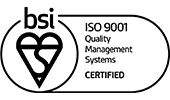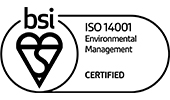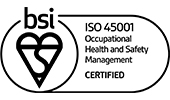A healthy, happy workforce is vital to running a successful business and, while office stress is inevitable at some points, nobody wants to think that their staff are unhappy.
Between 2013 and 2014, according to the Labour Force Survey, stress, depression or anxiety accounted for 11.3 million lost working days due to work-related ill health. The Chartered Institute of Personnel and Development have put together a useful guide to spotting the first signs of stress in the workplace, but there are ways that you can minimise the effects of office stress before it becomes a problem.
A report into health, wellbeing and productivity in offices, by the World Green Building Council (WGBC) and JLL, found that a lack of natural light and outdoor views, air that’s stuffy, too hot or too cold and too much noise not only make employees unhappy but also less productive.
Think more about less stress
Work Design Magazine recently spoke to the author of ‘The Healthy Workplace’ about how mindfulness meditation is being embraced by more and more businesses like Google, Apple and Facebook. Taking its inspiration from Buddhist meditation, it focuses on concentration and contemplation; two of the three Cs that Jeremy Myerson highlighted as making a welcoming workplace at our last Thought Leadership event.
Many larger businesses, including the World Bank, are incorporating meditation rooms into their offices. Obviously, a lot of smaller businesses won’t have the space or resources to be able to offer this, but there are other ways that you can make a positive impact on the wellbeing of your staff.

Find the right balance
While an office fit out or refurbishment can be stressful in itself (luckily, we looked at a few ways that you can make your fit out stress-free), redesigning the layout of your office and introducing some new office design techniques, could actually reduce stress levels in the workplace.
The Privacy Crisis survey, commissioned by our office furniture partners, Steelcase, found that 84% of workers felt their work environment didn’t allow them to concentrate easily, express ideas freely, work in teams without interruption, or choose where to work based on the task at hand. Their suggestion was to find a balance between an open and closed office design.

The Stressless Workspace
The Steelcase research and the World Green Building Council’s report both reached the same conclusions, highlighting some key strategies for improving wellbeing and reducing office stress levels.
- Customise areas to their use
Every space should be designed to suit the way that people use it. Allow your staff the choice to work on their own, in peace, behind a closed door, or in the open, socialising and sharing ideas,
- Give plenty of light
Using more glass in the work environment opens up the space, gives much-needed natural light and removes any perceived barriers between departments. One study even found that office workers with windows slept an average of 46 minutes more per night than their windowless colleagues.
- Provide communal spaces
Open, social areas will encourage collaboration and chance encounters, as well as fostering a less formal and more relaxed approach to work. Of course, you’ll always need more formal spaces too.
- Encourage activity
We’ve already looked at the importance of keeping your staff fit and active in the workplace. But global architecture firm, NBBJ, have imagined an office built with physical fitness in mind. You can take a bike path right to your desk and, rather than stairs or lifts, the entire space is built on an incline to reduce division between floors and make the walk between desks a little more energetic.
- Add a bit of green
The benefits of the humble office pot plant have long been debated, but recently the concept has found new life in the scientific theory of biophilia, as mentioned in the World Green Building Council’s report. It’s the concept that humans have an instinctive bond with other living things. We’d certainly agree, given that we added a moss wall with silver birches to the award-winning fit out of the Life Sciences Hub Wales.


Stress in the workplace is definitely becoming a serious issue for all businesses now. And, while changing elements of an office’s design aren’t going to solve all of the issues relating to office stress, addressing the needs of your employers through the layout of the workplace will certainly go some way to making the environment that your staff spend their time in a comfortable and, in as much as it can be, an enjoyable one.
Written by Jon Foster, Senior Designer








